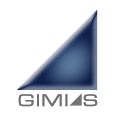
Photo from wikipedia
Background Endovascular treatment is evolving field and acceptable complication rate getting lower. In addition, changes in practice patterns have decreased the volume of specific cases for each practitioner, such as… Click to show full abstract
Background Endovascular treatment is evolving field and acceptable complication rate getting lower. In addition, changes in practice patterns have decreased the volume of specific cases for each practitioner, such as aneurysm coiling, which reduces the opportunity for intervention suite. Therefore, practitioners need training for endovascular treatment for their certified experience and procedural skills. In addition, even expert also need patient specific model for planning patient treatment, and training new developed device. Objective The authors developed a hands-on, dimensionally patient specific model for aneurysm coiling using patient anatomic data and three-dimensional (3D) printing. Design of the model focused on prevalence of aneurysm, level of difficulty and point of teaching. We report a preliminary series of endovascular planning with 3D printed aneurysm model. Methods An aneurysm model was printed based on the patient data acquired from the 3D rotational angiogram and CT angiography. A hollow aneurysm model with an identical vessel and aneurysm lumen to the actual anatomy was constructed with use of the 3D printed model as a mold and 3D virtual molding technique. Results Through the 3D manufacturing process, a patient-derived simulator was developed for endovascular treatment before procedure. A microcatheter shaping mandrel was formed to identically line the 3D curvature of the parent vessel and the long axis of the aneurysm. With use of the model, treatment plan was more precise and procedure time also shorter. Also learner could practice same patient model for their training without any complication. They can shape microcatheter and validated for the accuracy with the model. Conclusions The proposed aneurysm coiling simulator has the potential to improve learning experiences in medical environment. 3D printing and elastomeric casting can produce patient-specific models for treatment planning that add value to endovascular training and preparation. Abstract P-027 Figure 1 Disclosures Y. Kim: None. S. Baik: None. S. Lee: None.
Journal Title: Journal of NeuroInterventional Surgery
Year Published: 2017
Link to full text (if available)
Share on Social Media: Sign Up to like & get
recommendations!